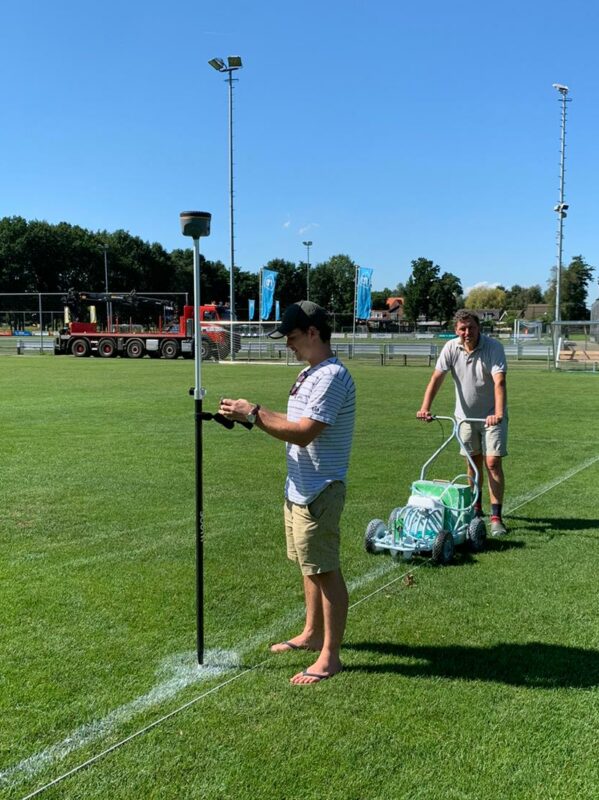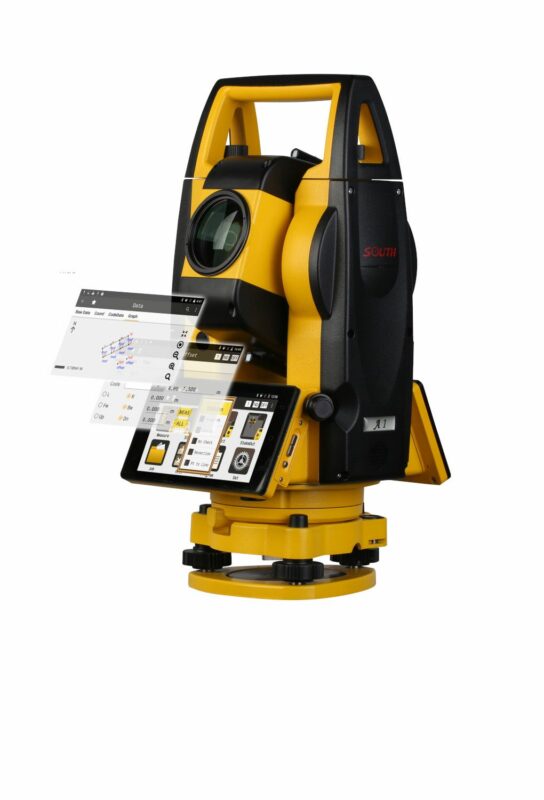GNSS
NTRIP, NTRIP Client and NTRIP Caster: How Do They Work

NTRIP (Networked Transport of RTCM via Internet Protocol) is a communication protocol that enables the distribution of Real-Time Correction (RTC) data for GNSS (Global Navigation Satellite System) systems over the internet.
An NTRIP Client is a device or software that uses the NTRIP protocol to receive RTC data from an NTRIP Caster. The NTRIP Client can be a GNSS receiver or a computer running GNSS post-processing software.
An NTRIP Caster is a server that provides the RTC data to the NTRIP Clients. The NTRIP Caster collects RTC data from GNSS reference stations and broadcasts it to NTRIP Clients over the internet.
Benefits of NTRIP
-
High accuracy: NTRIP provides GNSS correction data in real-time, allowing for improved accuracy compared to standalone GNSS receivers.
-
Wide coverage: NTRIP correction data can be received from multiple GNSS reference stations, providing coverage over large areas.
-
Cost-effective: NTRIP eliminates the need for a dedicated radio link between the reference station and the GNSS receiver, reducing costs.
-
Scalable: NTRIP can support a large number of GNSS receivers simultaneously, making it ideal for large-scale GNSS projects.

Applications of NTRIP
-
Agriculture: NTRIP enables farmers to use precision agriculture techniques to increase productivity and reduce costs.
-
Surveying: NTRIP allows surveyors to perform high-precision surveys with GNSS receivers, reducing the time and costs associated with traditional survey methods.
-
Construction: NTRIP can be used to control the position and orientation of construction machinery, improving the accuracy and efficiency of construction projects.
-
Geodetic and Geophysical Studies: NTRIP enables geodetic and geophysical studies to be performed with high accuracy, providing valuable data for research and decision-making.
Setting up NTRIP
To set up an NTRIP system, the following components are needed:
- GNSS reference station: A GNSS receiver at a known location that provides RTC data.
- NTRIP Caster: A server that collects RTC data from GNSS reference stations and broadcasts it to NTRIP Clients.
- NTRIP Client: A device or software that uses the NTRIP protocol to receive RTC data from the NTRIP Caster.
Setting up an NTRIP system can be done in the following steps:
- Install a GNSS reference station: The GNSS reference station should be installed at a known location and configured to generate RTC data.
- Set up an NTRIP Caster: The NTRIP Caster should be set up to collect RTC data from the GNSS reference station and broadcast it to NTRIP Clients.
- Configure NTRIP Client: The NTRIP Client should be configured to connect to the NTRIP Caster and receive RTC data.

Choosing an NTRIP Caster
There are several factors to consider when choosing an NTRIP Caster, including:
- Data quality: The NTRIP Caster should provide accurate and reliable RTC data.
- Network availability: The NTRIP Caster should have a stable and fast internet connection to ensure smooth data transfer to NTRIP Clients.
- Cost: The cost of using an NTRIP Caster should be considered, as some may charge a fee for using their services.
- User-friendliness: The NTRIP Caster should have a user-friendly interface that allows easy setup and management of the NTRIP system.
Advanced features of NTRIP
NTRIP offers several advanced features to enhance the performance and functionality of the system, including:
-
Authentication: NTRIP provides authentication mechanisms to ensure that only authorized NTRIP Clients can access the RTC data.
-
Encryption: NTRIP supports encryption of the data transfer, ensuring the security and privacy of the RTC data.
-
Multiple streams: NTRIP supports multiple streams, allowing the distribution of different types of RTC data from multiple GNSS reference stations.
-
Dynamic Caster selection: NTRIP Clients can dynamically switch between NTRIP Casters to ensure that they always receive the best possible RTC data.
Future of NTRIP
The future of NTRIP looks bright, with the ongoing advancements in GNSS technology and the increasing demand for high-precision GNSS data. NTRIP will continue to evolve to meet the needs of the growing number of industries that rely on it.

Importance of RTK GNSS Correction Data
RTK GNSS correction data is critical for achieving high-precision GNSS results. It allows GNSS receivers to correct errors and achieve sub-centimeter accuracy in real-time. This level of accuracy is essential for a wide range of applications, including:
-
Agriculture: RTK GNSS correction data is used to achieve high-precision positioning in precision agriculture, enabling farmers to optimize their crop yields and reduce input costs.
-
Surveying: RTK GNSS correction data is used in surveying for precise measurement of land and structures, reducing the time and cost associated with traditional survey methods.
-
Construction: RTK GNSS correction data is used in construction to ensure that structures are built accurately and efficiently, reducing the potential for errors and rework.
-
Geodetic studies: RTK GNSS correction data is used in geodetic studies to precisely measure changes in the earth’s surface, such as ground subsidence or uplift, providing valuable insights into natural processes.
Advantages of NTRIP for RTK GNSS Correction Data
NTRIP offers several advantages for RTK GNSS correction data, including:
-
Wide availability: NTRIP is widely available, allowing GNSS receivers to receive RTK GNSS correction data from multiple sources.
-
Real-time accuracy: NTRIP provides real-time RTK GNSS correction data, ensuring that GNSS receivers achieve the highest possible accuracy in real-time.
-
Cost-effective: NTRIP is a cost-effective solution for distributing RTK GNSS correction data, reducing the costs associated with traditional correction data distribution methods.
-
Scalability: NTRIP is highly scalable, allowing the distribution of RTK GNSS correction data to a large number of GNSS receivers.
Best practices for NTRIP implementation
To achieve the best results with NTRIP, it is important to follow best practices for its implementation, including:
-
Network connectivity: Ensure that your NTRIP Caster and NTRIP Clients have a reliable network connection with sufficient bandwidth to handle the real-time data transfer.
-
NTRIP Caster setup: Configure your NTRIP Caster carefully, ensuring that the correct RTC data streams are available and accessible to authorized NTRIP Clients.
-
GNSS reference station setup: Ensure that your GNSS reference station is set up correctly and is providing high-quality RTC data to the NTRIP Caster.
-
NTRIP Client configuration: Configure your NTRIP Client carefully, ensuring that it is able to connect to the desired NTRIP Caster and receive the correct RTC data stream.
-
Data security: Ensure that your NTRIP system is secure, with measures in place to prevent unauthorized access and data breaches.
By following these best practices, you can achieve the best results with NTRIP and ensure that your GNSS system is operating at its full potential.

Future outlook for NTRIP
The future outlook for NTRIP is very positive, as demand for high-precision GNSS solutions continues to grow in a wide range of industries. With its ability to provide real-time correction data, NTRIP will continue to play a critical role in the development of high-precision GNSS solutions.
Advances in technology, such as the increasing use of multi-constellation GNSS systems, will further increase the importance of NTRIP. These systems will provide even greater accuracy and reliability, making NTRIP an even more valuable tool for high-precision GNSS applications.
The increasing adoption of unmanned aerial vehicles (UAVs) and autonomous vehicles will also drive the growth of NTRIP, as these systems require high-precision GNSS solutions to operate effectively. NTRIP will play a critical role in providing real-time correction data to these systems, ensuring their safe and efficient operation.
Final thoughts
In this article, we have explored the whole process of NTRIP, NTRIP Client, and NTRIP Caster for RTK GNSS correction data. We have covered the key features and benefits of NTRIP, its components and their role in the correction data transmission, and best practices for its implementation.
We have also discussed the future outlook for NTRIP, highlighting its increasing importance for high-precision GNSS solutions and its role in enabling new and exciting applications in a wide range of industries.
In conclusion, NTRIP is a critical component of modern GNSS systems, providing real-time correction data to GNSS receivers and enabling high-precision results. Whether you are involved in agriculture, surveying, construction, or geodetic studies, NTRIP is a valuable tool for achieving high-precision GNSS results. With its continued growth and development, NTRIP is set to play an even more important role in the future of high-precision GNSS solutions.


